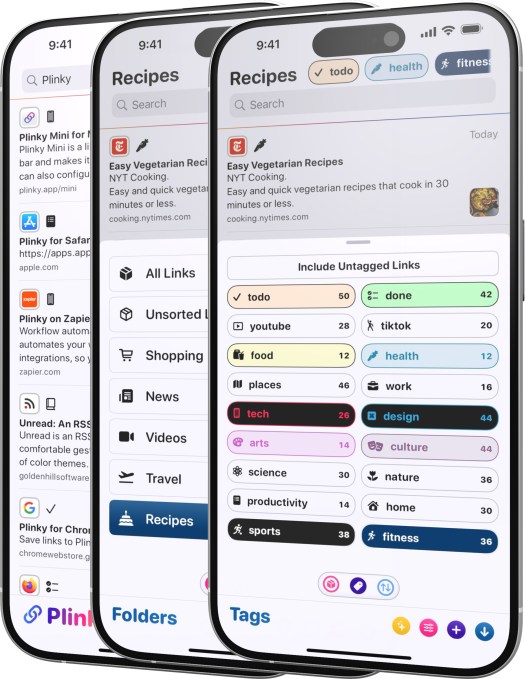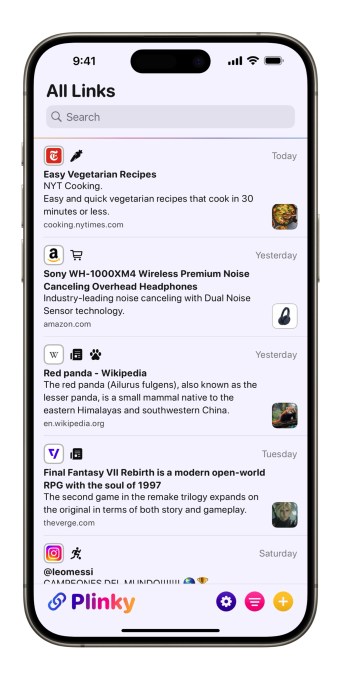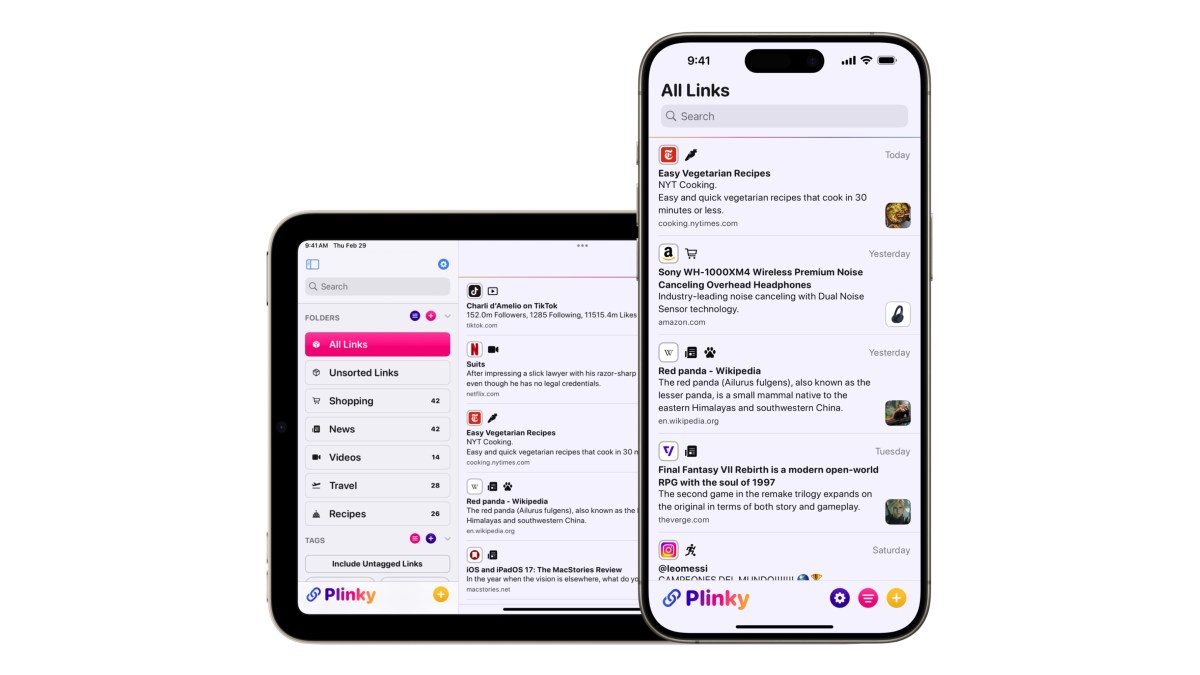Plinky is an app for you to collect and organize links easily | TechCrunch
The internet is full of cool websites, and some of them are so interesting and useful, it’s no wonder people want to save them for posterity. Bookmark managers, notes apps, and read-it-later services like Pocket are great for collecting and organizing links, but the fact is that there are too many links across too many platforms and apps to keep track of easily.
A former Twitter engineer, Joe Fabisevich, has built an app called Plinky that aims to tackle that problem with a new approach that prioritizes customization.
Available for iPhones, iPads, and Apple silicon Macs, Plinky lets you save links to webpages, apps, videos, images and even app stores, label them neatly, and organize them in different folders. You can customize these labels and folders, and even how a link shows up in the app. Additionally, you can search for links and pin them for easy access.
You can easily set the app as a favorite in the share menu to quickly share a link from anywhere — inside browsers, other apps, messengers. It’s easy to save a link with just a few taps, and I liked the save animation, too.

Fabisevich told TechCrunch he was inspired to build the app because he used to send his fiancee a ton of links — tweets, articles, videos and memes. While she loved the gesture, she found it distracting and asked him to save some of them for later. That’s when Fabisevich started working on Plinky.
The founder feels that the ethos of a link-saving app should be to make the process easy. He noted that apps like Pocket and Instapaper are great for reading, but links often have video and photos, and those apps might not be well-suited for consuming multimedia.

Fabisevich has also built extensions for Chrome, Safari, and Firefox, as well as integrations with RSS reader Unread, iOS Shortcuts, and Zapier. There is an open API, too, that third-party developers can use to build integration for more surfaces.
The free version lets you save up to 50 links, and create up to five labels and three folders. To remove these limits, you can pay $3.99 a month or $39.99 a year. Or, you can buy lifetime access for $159.99.

In terms of features, Plinky falls short when compared with Raindrop, a popular bookmarking app, which offers Android, Mac (Intel), and Windows apps, too. Raindrop offers more integrations and its free tier lets you save any number of links and bookmarks. However, Raindrop doesn’t play well with YouTube and App Store links, as they open through its in-app browser rather than redirecting you to the native app — a problem Plinky solves better.
Plinky offers a much better solution than saving links through a browser’s bookmark manager, given that it’s easier to organize links in the app with folders and labels.
Fabisevich said he has used Raindrop, but wanted to build a solution anyone can use. “In their own words, Raindrop is ‘designed for creatives, built for coders,’” he said. “While I love that, being both, that’s a very small slice of people who would benefit from having a universal inbox for their links.”
“From the first time you save a link in Plinky, you can see that the app does its job and gets out of the way. It’s a different approach than Raindrop, which requires you to think about categorization right from the start.”
What’s next for Plinky?
In the coming months, Fabisevich wants to build better organizational and customization features for the app.
He wants to make it easy for people to import links from existing services like Goodlinks, Raindrop, and Pocket, where they might already have a library of bookmarks and clippings.
The founder also aims to add secure folders for saving sensitive links, an in-app reading experience, and the ability to add reminders for links that you may want to read later. He also wants to build a native Mac app since the current one is just an iPad app that’s only compatible with MacOS devices that run on Apple’s own chips.
I liked it that the app’s support section has a list of upcoming features that users can vote on. The features with the most votes will be built first.

In the long term, Fabisevich wants to build more personalized workflows to save and prioritize links, along with a better search experience.




